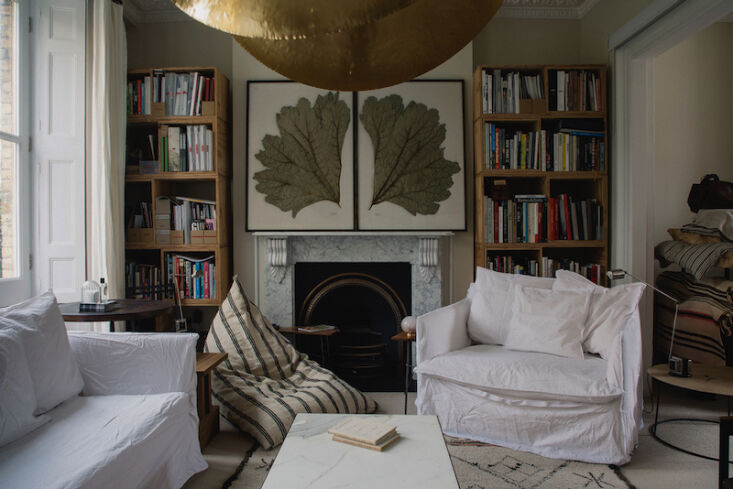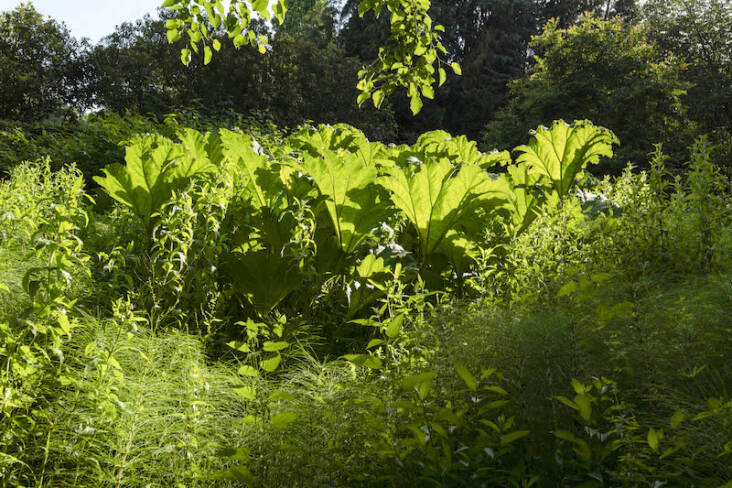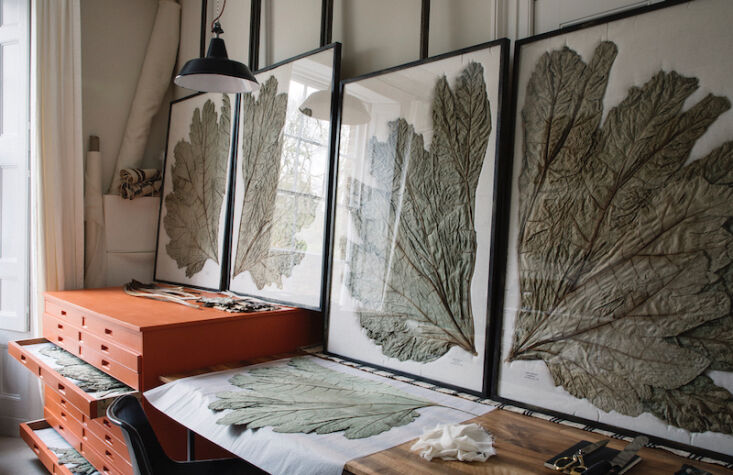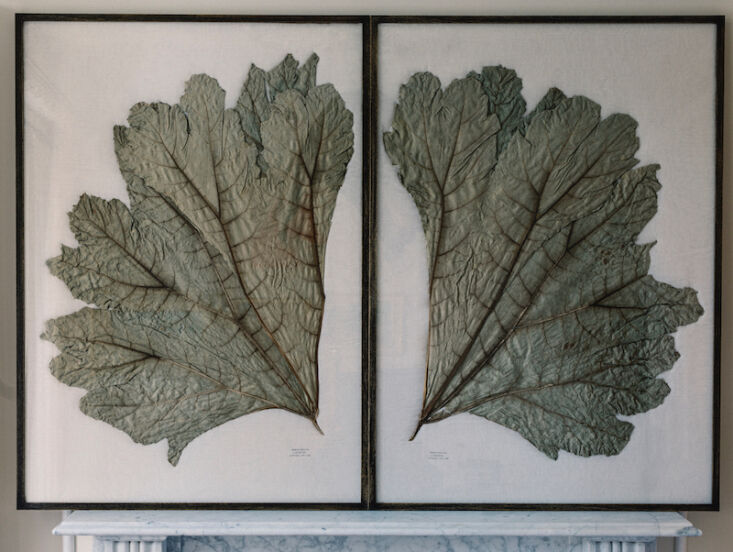Four days after the UK announced a ban on giant rhubarb—also known as gunnera—we received an email from Tom Berington. Tom is the founder of Different Like a Zoo, a company that represents a small number of designers who “do one thing really well.” (Paola Navone’s covetable Ghost sofa and Heerenhuis’s timeless table designs have both previously featured over on Remodelista.) He wanted us to know that he recently launched a new project called House of Herbaria, a limited series of pressed and framed gunnera leaves. The timing was so serendipitous, we wanted to find out more …

Tom grew up in a unique setting: a 15th-century Prior’s Hall that was once attached to a neighboring Benedictine monastery on the slopes of the Malvern Hills. At the bottom of his garden, in a boggy, sun-soaked patch by the lake, is a patch of Gunnera manicata that has been there “as long as I can remember.” Tom—who has a degree in Fine Art—had begun experimenting with pressed seaweed. “I wanted to do something that really made an impact,” he recalls, so he abandoned the seaweed idea and headed straight for the gunnera patch.

Gunnera dies naturally in the autumn, so Tom cuts his leaves in the summer before they rot. His craft begins at the selection process: “Sometimes the insects will have already got to them, creating massive holes. Sometimes you’ll find a leaf that has been discolored by disease, which created an interesting pattination that makes them stand out.”
Depending on how they are framed, Tom will select a pair of smaller leaves or one giant leaf for the press, a purpose-built contraption that has taken many seasons to perfect. The drying process takes around six months. “The aim is to extract as much moisture as possible so the leaves don’t go moldy or break up over time,” he explains. “It’s almost like developing a photograph,” he continues. “You place the leaf in the press and, six months later, you’re left with a surprise.”

Not all presses turn out as planned but, for Tom, that is part of the appeal: “They each have their own special qualities,” he says. To add depth, the leaves are cut and arranged in layers before being mounted on muslin and framed by Tom, a process that takes places between his childhood home in Worcestershire and his studio in London, where the pressings are displayed alongside the furniture he sells.

This year, giant, individual leaves have been split in two and presented as a pair. “Because you don’t see leaves of this size very often, it can be difficult to tell what you’re looking at,” Tom explains. “They can look like ancient relief maps and the veins also have a sort of drawn quality to them. There’s real beauty in their imperfection,” he says. “They are really unusual but they just seem to work in any setting.”
See also:
(Visited 1 times, 21 visits today)

